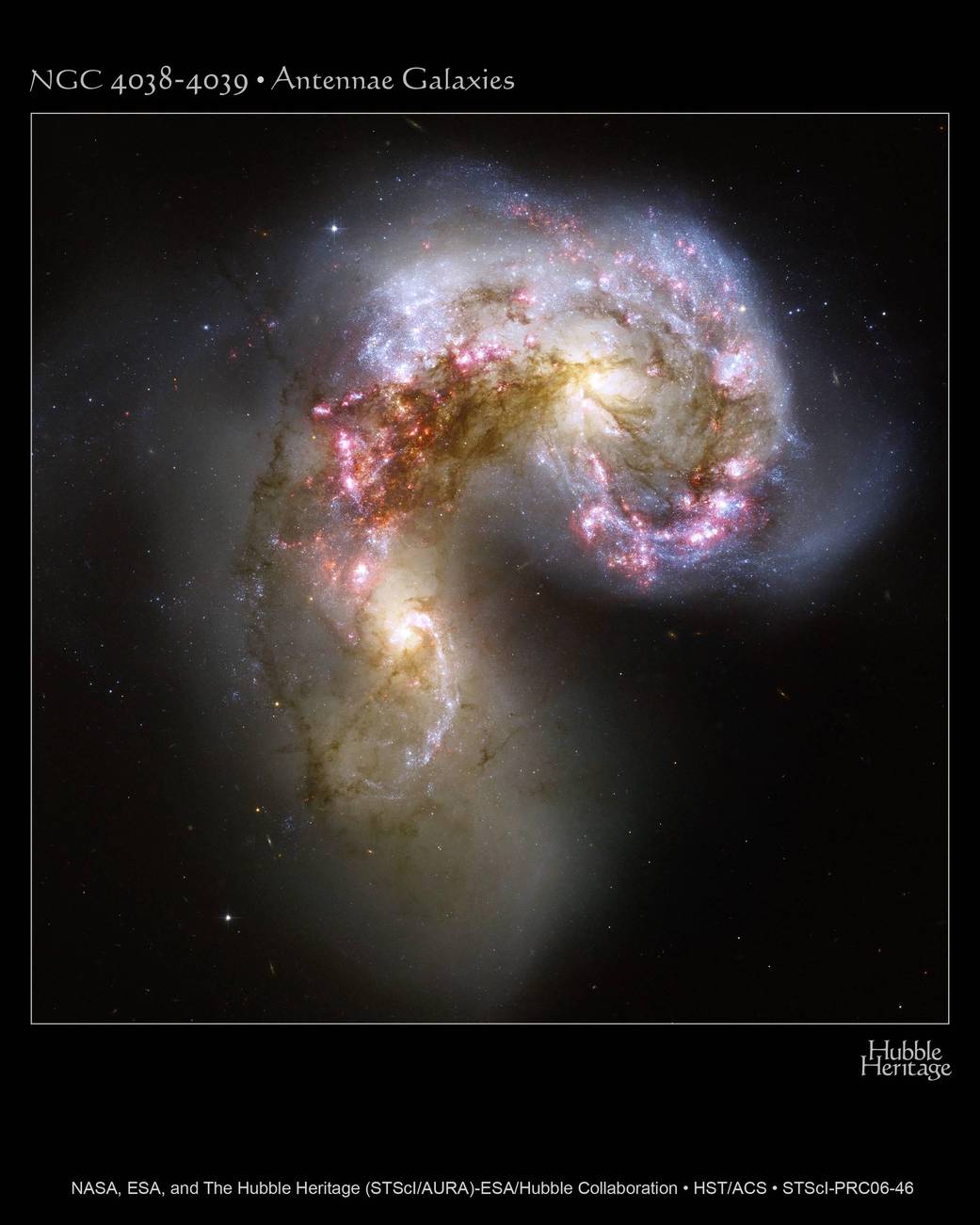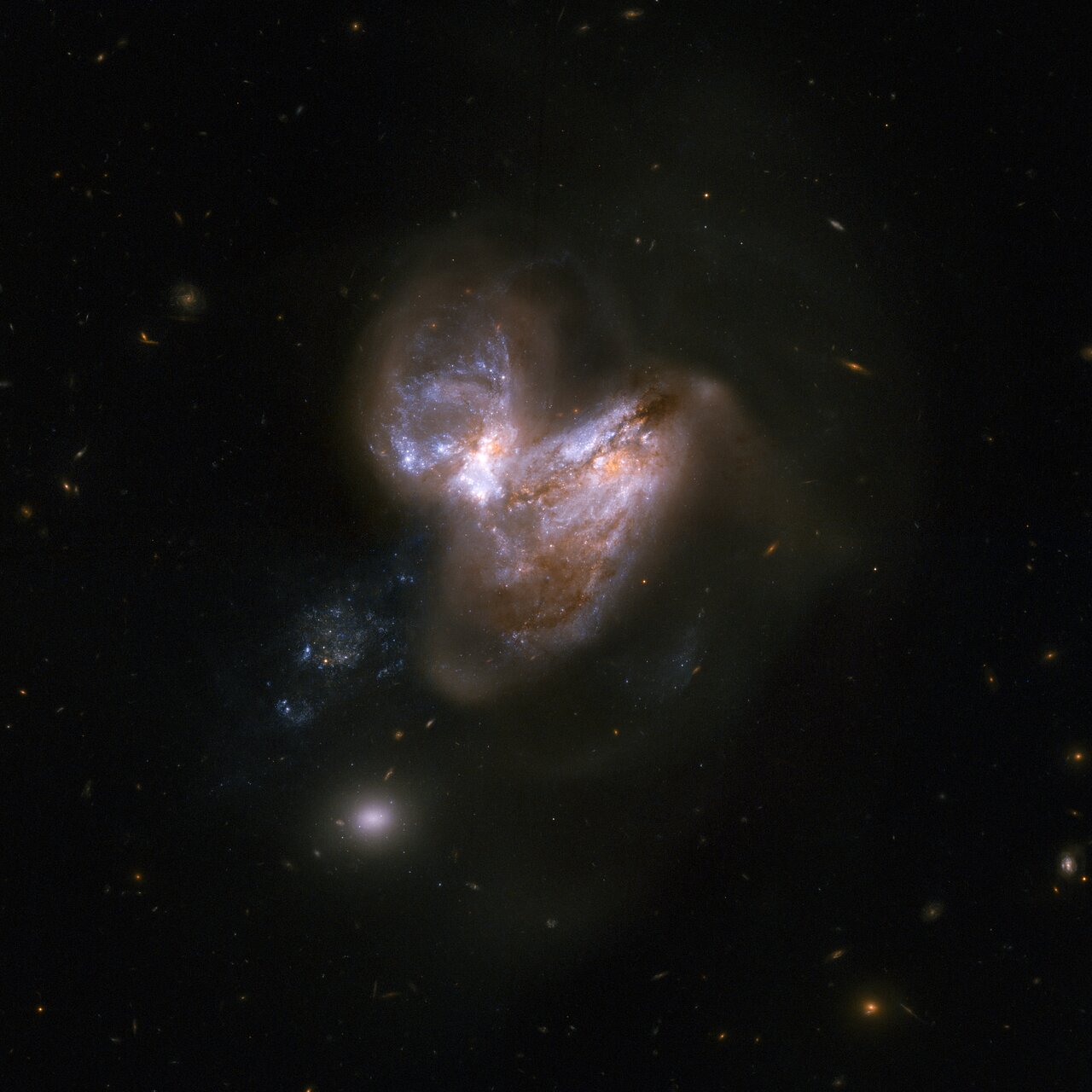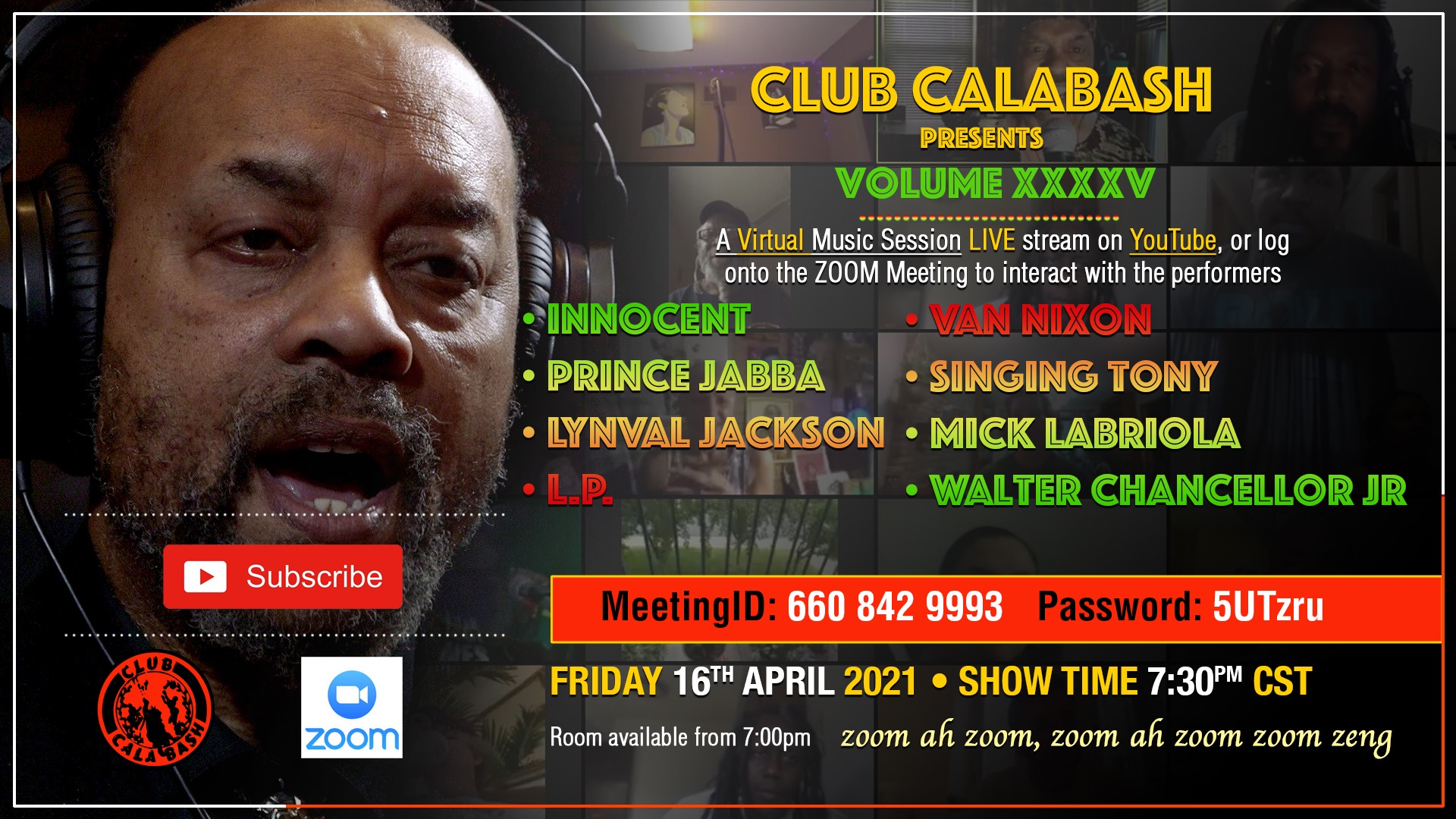Blog
Isabel Vargas Lizano (17 April 1919 – 5 August 2012), better known as Chavela Vargas (Spanish pronunciation: [tʃaˈβela ˈβaɾɣas]), was a Costa Rica-born Mexican singer. She was especially known for her rendition of Mexican rancheras, but she is also recognized for her contribution to other genres of popular Latin American music. She was an influential interpreter in the Americas and Europe, muse to figures such as Pedro Almodóvar, hailed for her haunting performances, and called “la voz áspera de la ternura”, ‘the rough voice of tenderness’. The Latin Academy of Recording Arts & Sciences, presented her with a Latin Grammy in 2007.
This image of the Antennae galaxies is the sharpest yet of this merging pair of galaxies. During the course of the collision, billions of stars will be formed. The brightest and most compact of these star birth regions are called super star clusters.
The two spiral galaxies started to interact a few hundred million years ago, making the Antennae galaxies one of the nearest and youngest examples of a pair of colliding galaxies. Nearly half of the faint objects in the Antennae image are young clusters containing tens of thousands of stars. The orange blobs to the left and right of image center are the two cores of the original galaxies and consist mainly of old stars criss-crossed by filaments of dust, which appears brown in the image. The two galaxies are dotted with brilliant blue star-forming regions surrounded by glowing hydrogen gas, appearing in the image in pink.
The new image allows astronomers to better distinguish between the stars and super star clusters created in the collision of two spiral galaxies. By age dating the clusters in the image, astronomers find that only about 10 percent of the newly formed super star clusters in the Antennae will survive beyond the first 10 million years. The vast majority of the super star clusters formed during this interaction will disperse, with the individual stars becoming part of the smooth background of the galaxy. It is however believed that about a hundred of the most massive clusters will survive to form regular globular clusters, similar to the globular clusters found in our own Milky Way galaxy. The Antennae galaxies take their name from the long antenna-like “arms” extending far out from the nuclei of the two galaxies, best seen by ground-based telescopes. These “tidal tails” were formed during the initial encounter of the galaxies some 200 to 300 million years ago. They give us a preview of what may happen when our Milky Way galaxy collides with the neighboring Andromeda galaxy in several billion years.

John Wesley Funchess (April 16, 1931 – February 1, 1994) known professionally as John (or Johnny) Littlejohn, was an American electric blues slide guitarist. He was active on the Chicago blues circuit from the 1950s to the 1980s.
Born in Lake, Mississippi, Littlejohn first learned to play the blues from Henry Martin, a friend of his father’s. In 1946 he left home and traveled widely, spending time in Jackson, Mississippi; Arkansas; Rochester, New York; and Gary, Indiana. He settled in Gary in 1951, playing whenever possible in the nearby Chicago area. Through his connections in Gary, he was acquainted with Joe Jackson, the patriarch of the musical Jackson family, and Littlejohn and his band reputedly served as an occasional rehearsal band for the Jackson 5 in the mid- to late 1960s.
Littlejohn played regularly in Chicago clubs (he was filmed by drummer Sam Lay playing with Howlin’ Wolf‘s band about 1961) but did not make any studio recordings until 1966, when he cut singles for several record labels. Later that year he recorded an album for Arhoolie Records and four songs for Chess Records. The Chess tracks were not issued at the time. He recorded a few singles for small local labels but did not record another album until 1985, when Rooster Blues issued So-Called Friends. Soon after, he fell into ill health. He died of renal failurein Chicago, on February 1, 1994, at the age of 62.
more...Herbert Jay Solomon (April 16, 1930 – July 1, 2003), known professionally by his stage name Herbie Mann, was an American jazz flautist and important early practitioner of world music. Early in his career, he also played tenor saxophone and clarinet (including bass clarinet), but Mann was among the first jazz musicians to specialize on the flute. His most popular single was “Hijack“, which was a Billboard No. 1 dance hit for three weeks in 1975.
Mann emphasized the groove approach in his music. Mann felt that from his repertoire, the “epitome of a groove record” was Memphis Undergroundor Push Push, because the “rhythm section locked all in one perception.”
Herbie Mann was born in Brooklyn, New York, to Jewish parents, Harry C. Solomon (May 30, 1902 – May 31, 1980), who was of Russian descent, and Ruth Rose Solomon (née Brecher) (July 4, 1905 – November 11, 2004), of Romanian descent who was born in Bukovina, Austria-Hungary but immigrated to the United States with her family at the age of 6. Both of his parents were dancers and singers, as well as dance instructors later in life. He attended Lincoln High School in Brighton Beach. His first professional performance was playing the Catskills resorts at age 15. In the 1950s Mann was primarily a bop flutist, playing in combos with artists such as Phil Woods, occasionally playing bass clarinet, tenor saxophone and solo flute.
more...Bennie Green (April 16, 1923 – March 23, 1977) was an American jazz trombonist.
Born in Chicago, Illinois, Green worked in the orchestras of Earl Hines and Charlie Ventura, and recorded as bandleader through the 1950s and 1960s.[1] According to critic Scott Yanow of Allmusic, Green’s style straddled swing music and soul, making him one of the few trombonists of the 1950s and ’60s uninfluenced by the pioneering sound of J.J. Johnson.
Green relocated to Las Vegas where he played in hotel bands for the last decade of his career, though he made occasional appearances at jazz festivals. He died on March 23, 1977.
more...Alton Purnell (April 16, 1911 – January 14, 1987) was an American jazz pianist. He was a longtime performer in Dixieland jazz. Purnell was born in New Orleans on April 16, 1911. His brother, Theodore, became a reed player.
Purnell sang before playing piano professionally, beginning to do so locally in New Orleans in 1928. He played in the 1930s with Isaiah Morgan, Alphonse Picou, Big Eye Louis Nelson, Sidney Desvigne, and Cousin Joe, and with Bunk Johnson in the middle of the 1940s. Purnell joined George Lewis‘s band after Johnson’s broke up in 1946, and remained there well into the 1950s, including for international tours.
more...Soleá (Soleares) por Buleriás is, as it’s name suggests, a Soleares with the pace and drive of a Bulerías.Often considered a hybrid form, Soléa por bulerías (also called Soleares por bulerías) is more like a point on the continuum between Soleares and Bulerías. Determining just where that point is can be a source of contention among professionals and aficionados. There are resources that state quite definitely that it is a sped up soleares and others that make it clear that it’s a slowed down bulerías. Adding to the potential for confusion, there are different names for this form: Bulería por Soleá, Soleabulería, Bulerías al golpe and Bulería pa escuchar.
more...
https://www.youtube.com/watch?v=TRciw1BDkSY
more...This system consists of a pair of galaxies, dubbed IC 694 and NGC 3690, which made a close pass some 700 million years ago. As a result of this interaction, the system underwent a fierce burst of star formation. In the last fifteen years or so six supernovae have popped off in the outer reaches of the galaxy, making this system a distinguished supernova factory. This image is part of a large collection of 59 images of merging galaxies taken by the Hubble Space Telescope and released on the occasion of its 18th anniversary on 24th April 2008.

Roy Linwood Clark (April 15, 1933 – November 15, 2018) was an American singer and musician. He is best known for having hosted Hee Haw, a nationally televised country variety show, from 1969 to 1997. Clark was an important and influential figure in country music, both as a performer and in helping to popularize the genre.
During the 1970s, Clark frequently guest-hosted for Johnny Carson on The Tonight Show and enjoyed a 30-million viewership for Hee Haw. Clark was highly regarded and renowned as a guitarist, banjo player, and fiddler. He was skilled in the traditions of many genres, including classical guitar, country music, Latin music, bluegrass, and pop. He had hit songs as a pop vocalist (e.g., “Yesterday, When I Was Young” and “Thank God and Greyhound”), and his instrumental skill had an enormous effect on generations of bluegrass and country musicians. He became a member of the Grand Ole Opry in 1987, and, in 2009, was inducted into the Country Music Hall of Fame. He published his autobiography, My Life—in Spite of Myself, in 1994.
more...Irving Herbert Pomeroy III (April 15, 1930 – August 11, 2007) was an American jazz trumpeter, teacher, and the founder of the MIT Festival Jazz Ensemble.
Pomeroy was born in Gloucester, Massachusetts, United States. He began playing trumpet at an early age. In his early teens he started performing in Boston, claiming inspiration from the music of Louis Armstrong. In 1946, at the age of 16, he became a member of the Musicians Union in Gloucester after the union did not have enough members to conduct a meeting. He studied dentistry at Harvard University for a year but dropped out to pursue his jazz career. After high school, he studied music from 1950 to 1952 at the Schillinger House in Boston.
Remaining in Boston, he played with Charlie Parker for one week in 1953, then briefly with Charlie Mariano, before going on tour with Lionel Hampton and Stan Kenton. Back in Boston, he played with Serge Chaloff and was hired to teach at Schillinger after it had been renamed the Berklee School of Music. During the latter part of the 1950s he was the leader of a sixteen-piece band which included Mariano, Bill Berry, Jaki Byard, Joe Gordon, and Boots Mussulli. For two years after that, he led another band, which included Alan Dawson, Hal Galper, Michael Gibbs, Dusko Goykovich, and Sam Rivers. He worked in pit orchestras for Broadway shows passing through Boston. Beginning in 1963 he led bands at the Massachusetts Institute of Technology. He led a band until 1993, two years before retiring from Berklee.
more...Richard Davis (born April 15, 1930) is an American jazz bassist. Among his best-known contributions to the albums of others are Eric Dolphy‘s Out to Lunch!, Andrew Hill‘s Point of Departure, and Van Morrison‘s Astral Weeks, of which critic Greil Marcus wrote (in The Rolling Stone Illustrated History of Rock and Roll), “Richard Davis provided the greatest bass ever heard on a rock album.”
Born in Chicago, Davis began his musical career with his brothers, singing bass in his family’s vocal trio. He studied double bass in high school with his music theory teacher and band director, Walter Dyett. He was a member of Chicago Youth Symphony Orchestras (then known as the Youth Orchestra of Greater Chicago) and played in the orchestra’s first performance at Chicago’s Orchestra Hall on November 14, 1947. After high school, he studied double bass with Rudolf Fahsbender of the Chicago Symphony Orchestra while attending VanderCook College of Music.
After college, Davis performed in dance bands. The connections he made led him to pianist Don Shirley. In 1954 he and Shirley moved to New York City and performed together until 1956, when Davis began playing with the Sauter-Finegan Orchestra. In 1957, he became part of Sarah Vaughan‘s rhythm section, touring and recording with her until 1960.
more...This supernova shock wave plows through interstellar space at over 500,000 kilometers per hour. Near the middle and moving up in this sharply detailed color composite, thin, bright, braided filaments are actually long ripples in a cosmic sheet of glowing gas seen almost edge-on. Cataloged as NGC 2736, its elongated appearance suggests its popular name, the Pencil Nebula. The Pencil Nebula is about 5 light-years long and 800 light-years away, but represents only a small part of the Vela supernova remnant. The Vela remnant itself is around 100 light-years in diameter, the expanding debris cloud of a star that was seen to explode about 11,000 years ago. Initially, the shock wave was moving at millions of kilometers per hour but has slowed considerably, sweeping up surrounding interstellar material. In the featured narrow-band, wide field image, red and blue colors track, primarily, the characteristic glows of ionized hydrogen and oxygen atoms, respectively.

Matima Kinuani Mpiosso April 14th 1951-1996 Zairian Guitarist and leader of the group Za’iko Langa Langa which he formed while he was in school. He combined Zairian folk tunes with rock to produce an original sound that was popular in Europe and Japan. Arthritis stopped him from playing before his early death.
https://www.youtube.com/watch?v=o9_oNt0tIwg
more...Eugene “Jug” Ammons (April 14, 1925 – August 6, 1974), also known as “The Boss”, was an American jazz tenor saxophonist. The son of boogie-woogie pianist Albert Ammons, Gene Ammons is remembered for his accessible music, steeped in soul and R&B.
Born in Chicago, Illinois, Ammons studied music with instructor Walter Dyett at DuSable High School. Ammons began to gain recognition while still at high school when in 1943, at the age of 18, he went on the road with trumpeter King Kolax‘s band. In 1944 he joined the band of Billy Eckstine (who bestowed on him the nickname “Jug” when straw hats ordered for the band did not fit), playing alongside Charlie Parker and later Dexter Gordon. Notable performances from this period include “Blowin’ the Blues Away,” featuring a saxophone duel between Ammons and Gordon. After 1947, when Eckstine became a solo performer, Ammons then led a group, including Miles Davis and Sonny Stitt, that performed at Chicago’s Jumptown Club. In 1949 Ammons replaced Stan Getz as a member of Woody Herman‘s Second Herd, and then in 1950 formed a duet with Sonny Stitt.
The 1950s were a prolific period for Ammons and produced some acclaimed recordings such as “The Happy Blues” (1955). Musicians who played in his groups, apart from Stitt, included Donald Byrd, Jackie McLean, John Coltrane, Kenny Burrell, Mal Waldron, Art Farmer, and Duke Jordan.
more...More Posts
- World Music with Toumani Diabate
- Daily Roots with Carlton Coffee
- Visual T’filah Shabbat Service Mount Zion
- The Cosmos with M16
- Kevin Eubanks Day
- Little Willie John Day
- Jerome Richardson Day
- World Music with Rancapino Chico
- Daily Roots with the Wailing Souls
- Synapse Podcast WCCO talk radio
- Synapse Podcast on WCCO
- The Cosmos with M77
- George Cables Day
- Ellis Marsalis Day
- Aaron Copeland Day
- World Music with Um Kulthum
- Daily Roots with Winston Jarrett
- Rhythm Roots Workshop Residency
- The Cosmos with NGC 1706
- Idris Muhammad Day
